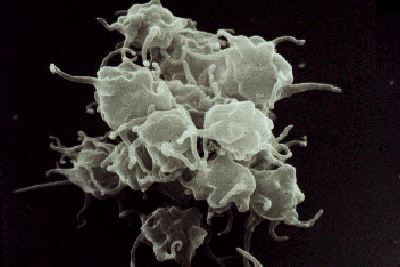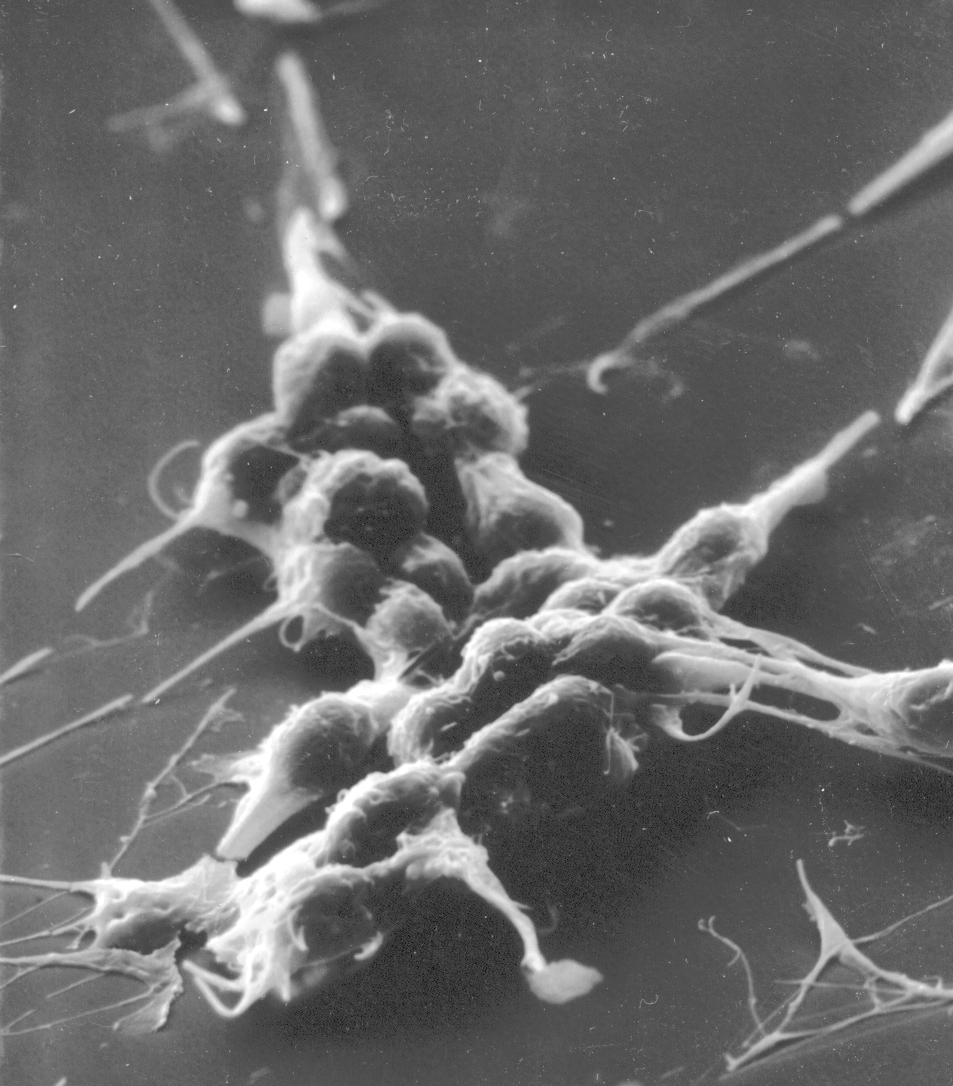Drug-Induced Thrombotic Microangiopathy (DITMA)
Drugs can cause TMA, abbreviated as DITMA, by two major mechanisms.
Immune-mediated reactions. Just like DITP, drugs can cause TMA by the formation of drug-dependent antibodies. Different from DITP, in which the drug-dependent antibodies react only with platelets, in DITMA the drug-dependent antibodies react with multiple different cells to cause the systemic microvascular thrombosis that defines TMA. Quinine is the most common cause of immune-mediated DITMA. Quinine-induced TMA is typically a very sudden and severe illness with severe kidney injury. Patients often can recall the exact time, place, and circumstances of their initial symptoms, and these symptoms typically occur within several hours of quinine exposure. Quinine exposure may be from tablets, typically used for the common symptom of leg cramps, or from common beverages, such as tonic water, Schweppes Bitter Lemon, and Dubonnet aperitif. These clinical characteristics of quinine-induced TMA are assumed to be similar for other drugs (or foods or beverages) that may cause immune-mediated TMA.
Toxic reactions. DITMA can also be caused by direct drug toxicity. There are 4 principal classes of drugs that can cause toxicity-mediated TMA: [1] chemotherapy drugs used for cancer and related disorders (such as mitomycin and gemcitabine), [2] immunosuppressive drugs used for prevention of organ graft rejection and other immunologic disorders (such as cyclosporine and tacrolimus), [3] vascular endothelial growth factor (VEGF) inhibitors (such as bevacizumab and sirolimus), and [4] illegal drugs (such as cocaine) or legal narcotics taken inappropriately (such as Opana [oxymorphone] injected intravenously). Toxicity-mediated TMA may also be sudden and severe, as when Opana is injected intravenously. However more often the onset of TMA is very gradual, manifested by kidney failure and hypertension. This chronic course occurs when the appropriate dose and administration of a drug may be safe, but higher doses or continuation for longer duration can cause toxicity-mediated TMA.
Our initial systematic review of all drugs reported to be associated with TMA was completed on March 27, 2014 and published in 2015.
Al-Nouri ZL, Reese JA, Terrell DR, Vesely SK, George JN. Drug-induced thrombotic microangiopathy: a systematic review of published case reports. Blood 2015; 125 (4): 616-618. [Full Text]
An update to this review was completed on March 1, 2018 and published in 2018.
Saleem R, Reese JA, George JN. Drug-induced thrombotic microangiopathy. Amer J Hematol 2018; 93 (9): E241-E243. [Full Text]
These combined reviews identified 403 articles that reported data on 688 individual patients with TMA attributed to 84 drugs. One-hundred and seventy-seven patient reports presented evidence supporting a definite causal association with 31 drugs. Among these 177 patients, quinine was the most commonly reported drug (in 44 patients). For 14 of the 31 drugs, there was only one report with definite evidence. Forty-nine articles presented group data with TMA attributed to 14 drugs; none of these reports had evidence supporting a definite causal association.
31 drugs reported to have a definite causal association with TMA in 177 individual patient reports
Drug |
Patients |
|---|---|
BEVACIZUMAB |
3 |
BORTEZOMIB |
1 |
CARFILZOMIB |
4 |
COCAINE |
2 |
CYCLOSPORINE |
16 |
DOCETAXEL |
1 |
EVEROLIMUS |
1 |
GEMCITABINE |
10 |
IMATINIB |
2 |
IMMUNE GLOBULIN |
2 |
INTERFERON ALPHA |
8 |
INTERFERON BETA |
3 |
INTERFERON POLYCARBOXYLATE |
1 |
IXAZOMIB |
1 |
MITOMYCIN |
3 |
MUROMONAB-CD3 |
1 |
OXALIPLATIN |
1 |
OXYCODONE |
3 |
OXYMORPHONE |
28 |
PALBOCICLIB |
1 |
PENICILLIN |
1 |
PENTOSTATIN |
2 |
QUETIAPINE |
1 |
QUININE |
44 |
SIROLIMUS |
9 |
SULFISOXAZOLE |
1 |
SUNITINIB |
3 |
TACROLIMUS |
21 |
TRIELINA |
1 |
VALPROIC ACID |
1 |
VINCRISTINE |
1 |
DITMA Systematic Review Table of Drugs - This comprehensive table lists all 452 articles reporting data on 86 drugs, both case reports and group data. Both Immune-mediated and Toxicity-mediated mechanisms are included in this table. The scores represent out assessment of the strength of the causal association of the drug with TMA. (1-Definite Causal Association; 2-Probably Causal Association; 3-Possible Causal Association; 4-Unlikely Causual Association).
DITMA Review Methods - Methods of assessment of reports of DITMA and determination of scores designating the level of evident for a causal association of the drug with TMA. Different methods were used for individual patient reports and group data. For individual patient reports, different methods were used for drugs with a presumed Immune-mediated mechanism and drugs with a presumed Toxicity-mediated mechanism.
Publications
1. This review places DITMA in the context of all TMA syndromes.
George JN, Nester CM. Syndromes of thrombotic microangiopathy. New Eng J Med 2014; 310 (7): 654-666. [Full Text]
2. The systematic review that provided the data published in this section of our website.
Al-Nouri ZL, Reese JA, Terrell DR, Vesely SK, George JN. Drug-induced thrombotic microangiopathy: a systematic review of published case reports. Blood 2015; 125 (4): 616-618. [Full Text]
3. Update to the systematic review to include articles published through 2018.
Saleem R, Reese JA, George JN. Drug-induced thrombotic microangiopathy. Amer J Hematol 2018; 93 (9): E241-E243. [Full Text]
Reese JA, Bougie DW, Curtis, BR, Terrell DR, Vesely SK, Aster RH, George JN. Drug-induced thrombotic microangiopathy: experience of the Oklahoma Registry and the BloodCenter of Wisconsin. American J Hematol 2015; 90 (5): 406-410. [Full Text]
James N. George, M.D.
Professor of Medicine
Hematology-Oncology Section, Department of Medicine
Department of Biostatistics & Epidemiology, College of Public Health
University of Oklahoma Health Sciences Center
IMPORTANT!
The information included in this website is for educational purposes only. The designers and operators of this site take no responsibility for the things you may do with this information. For advice on your unique medical condition, please consult your health care professional. By going further into this website you acknowledge that you have read and understood this disclaimer.



